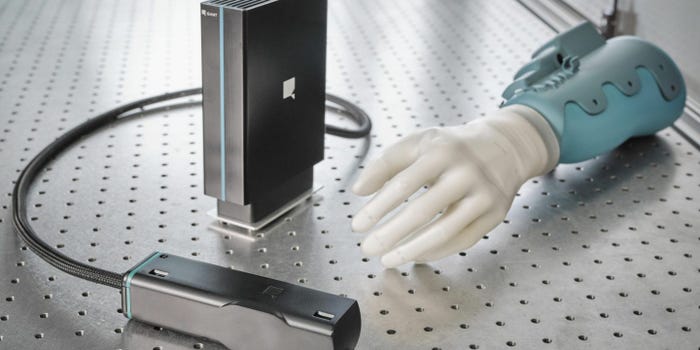More enterprises are progressing to proof-of-concept with use case tests that marry IoT and blockchain technologies, but don’t expect to see IoT platforms and blockchain deployed in a bundled way just yet.
August 20, 2019

Let’s assume IoT platforms are only as valuable as the data they generate. If that’s the case, blockchain technology might help enterprises exploit that data further.
The digital ledgering technology provides a clear way of logging and exchanging data securely among various members of an ecosystem. As a concept, this sounds like a no-brainer in the decentralized, increasingly digital economy. In the modern era, there is growing focus on customer experience, and where many different players in a supply chain may directly or indirectly impact customer experience. The challenge with blockchain over the years, however, has been that companies across industry verticals were not always sure what it was or how to use it. In addition, organizations mulling the use of blockchain must navigate how they could benefit from participating in ecosystems where data was shared more openly while also ensuring data entering into the ledger was accurate in the first place.
“The public perception from early news reports about blockchain was mostly about its place in the cryptocurrency ecosystem, and not as a decentralized, distributed asset exchange technology for sharing data with partners,” said Christian Reichenbach, global digital advisor at HPE. “The perception has started to change such that when we talk to enterprises, it has gone from being a technology that they were totally unfamiliar with to one where they understand the core ingredients of a blockchain solutions and can better assess it.”
While that lack of understanding remains a barrier to adoption of blockchain technology by some companies, another adoption hurdle is rooted in the willingness of companies to participate in more open ecosystems where data generated from one company’s IoT network, for example, could be shared with others in the ecosystem to solve common problems.
“I think there is still something that is not understood by all companies — that blockchain is a team sport,” Reichenbach said. “It is an open system and for open connected use cases, something where organizations want to collaborate with each other, and sometimes this is still not in the mindset of some of the enterprises today.”
The mindset has evolved to allow more investment in blockchain in industries like transportation and logistics. For example, companies in logistics are accustomed to working with various intermediaries to ship and deliver packages. From there, Reichenbach said, it has been a short jump to understanding how sharing data generated from one company’s IoT sensors at a port, in a warehouse or on a delivery truck could be shared with others in the supply chain to refine processes and provide better customer experiences.
As such, transportation and logistics is one of the sectors in which more companies have been embarking on proof-of-concept testing of use cases in IoT architectures join with blockchain to share encrypted data between parties. Reichenbach said.
“There is definitely deeper integration happening between IoT and blockchain,” he added.
An example of how HPE is leveraging its own IoT platform expertise in combination with blockchain technology to benefit the transportation and logistics sector is evident in a strategic partnership the company announced with transportation technology company Continental last February. The two companies created a blockchain-based data monetization platform due to be available before the end of the year. The platform allows data collected from the Internet-connected sensors on one vehicle on the road to be shared with other connected vehicles.
In the past, competing carmakers may have not wanted to share IoT data from their vehicles and systems with one another, but blockchain allows them to encrypt and sell that data directly to another carmaker, while withholding data they don’t want to share with competitors. The end result is drivers on a given highway can get advance warning of changes in road conditions, weather, traffic congestion and more, derived from data that was collected from the IoT sensors on another car several miles ahead of them on the same road, Reichenbach said.
Though this platform remains in its early stages, one could envision similar leveraging of IoT and blockchain technologies in platforms for trucking fleets as well. Reichenbach said such platforms demonstrate how blockchain can be an “add-on” to existing IoT architectures.
Another transportation sector example of how IoT and blockchain are coming together was evident in July’s announcement that Daimler, the German maker of cars, trucks and fleet vehicles was working with Austria’s Riddle & Code to implement a blockchain-based Car Wallet for supporting secure transactions and data sharing between vehicles. Such wallets and similar “secure elements” provide different devices and machines with unique digital identifiers that allow transactions and data exchanges to happen, said Benjamin Schwarz, head of communication at Riddle & Code.
“To securely identify an object on the blockchain, many solutions exist, starting with secure crypto tags in the form factor of a sticker, and working as a seal,” he said via email. “However, only a dedicated secure element, which is a crypto chip module designed to be used for blockchain technology, offers sufficient security for valuable objects, such as a vehicle. Our secure element is at the heart of the Car Wallet we developed for Daimler. It provides a tamper-proof digital identity and full wallet functionality. It is both about security and enabling new business models and incentivization schemes.”
However, Riddle & Code is not an IoT platform company, so it would not typically provide sensors and other data-generating IoT hardware, just the crypto chip or module and software that allows transactions to occur over blockchain.
The opportunity for companies like Riddle & Code to partner with IoT platform providers seems riper than ever. Zion Market Research recently forecasted that the blockchain IoT market, including hardware, software and services, is set to grow at a compound annual growth rate of more than 91% through 2025.
There is still a ways to go before blockchain and IoT reach the full potential of what they can accomplish together. Forrester Research last month wrote that despite seeming like an obvious technology pairing, blockchain and IoT integration continues to be held back by “cultural and organizational issues,” an observation that echoes Reichenbach’s.
For now, even as the gap in blockchain understanding is starting to close, and more integration of IoT and blockchain technologies falls into place, it seems unlikely the technologies will be deployed simultaneously as a bundled solution for enterprises, according to HPE’s Reichenbach. More likely, IoT platform companies may need to develop blockchain expertise or work with other technology partners as their customers start to see more need to share data generated by the IoT architectures they already have in place.
“IoT and blockchain as a single very tightly combined solution is not something I have seen so far,” Reichenbach said. “What I see most now is hugely scaled IoT platforms in terms of sensors and data analytics, and then blockchain coming in as an add-on because you want to start sharing some of that data.”
About the Author(s)
You May Also Like
.png?width=700&auto=webp&quality=80&disable=upscale)
.png?width=700&auto=webp&quality=80&disable=upscale)

.png?width=300&auto=webp&quality=80&disable=upscale)
.png?width=300&auto=webp&quality=80&disable=upscale)

